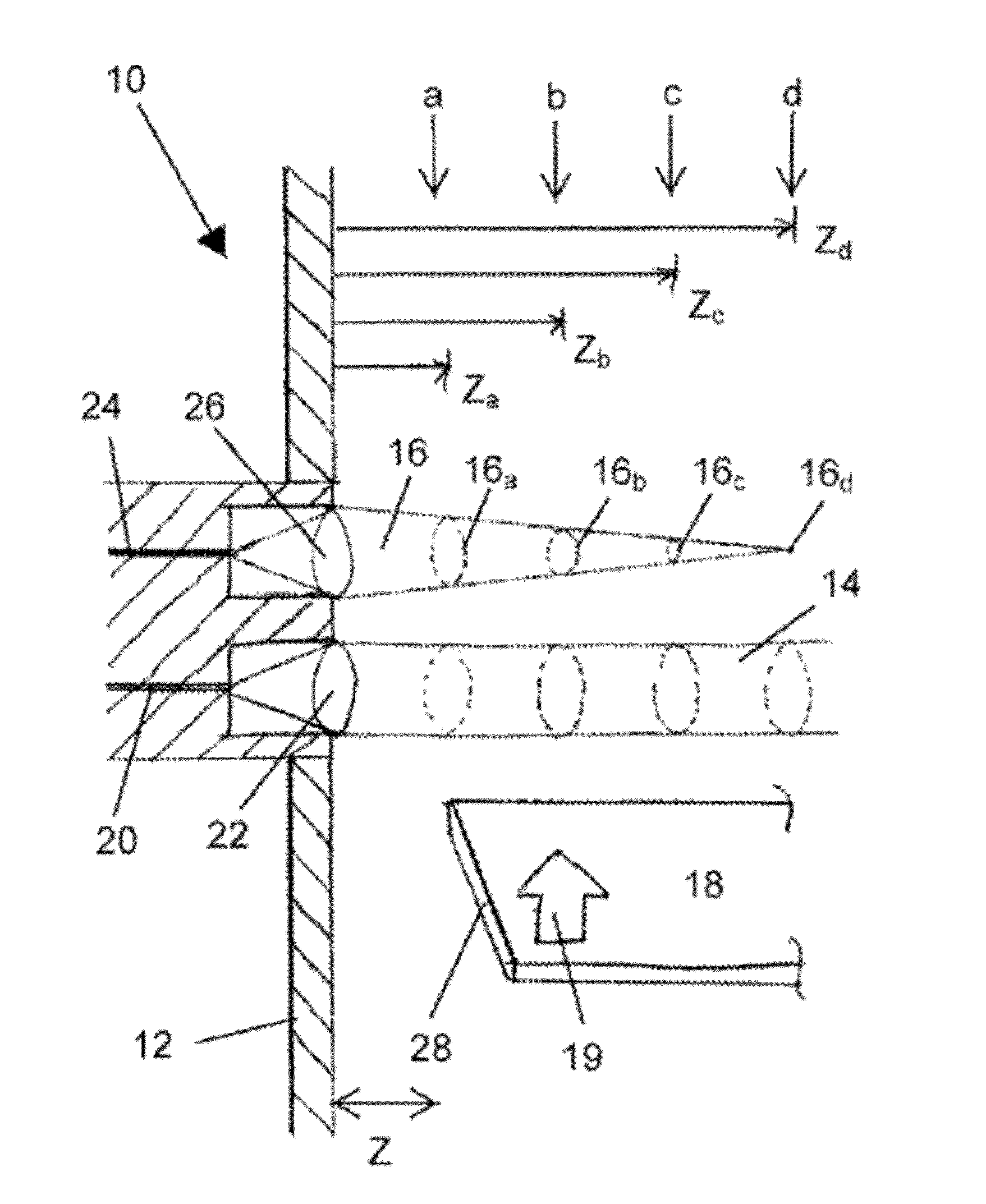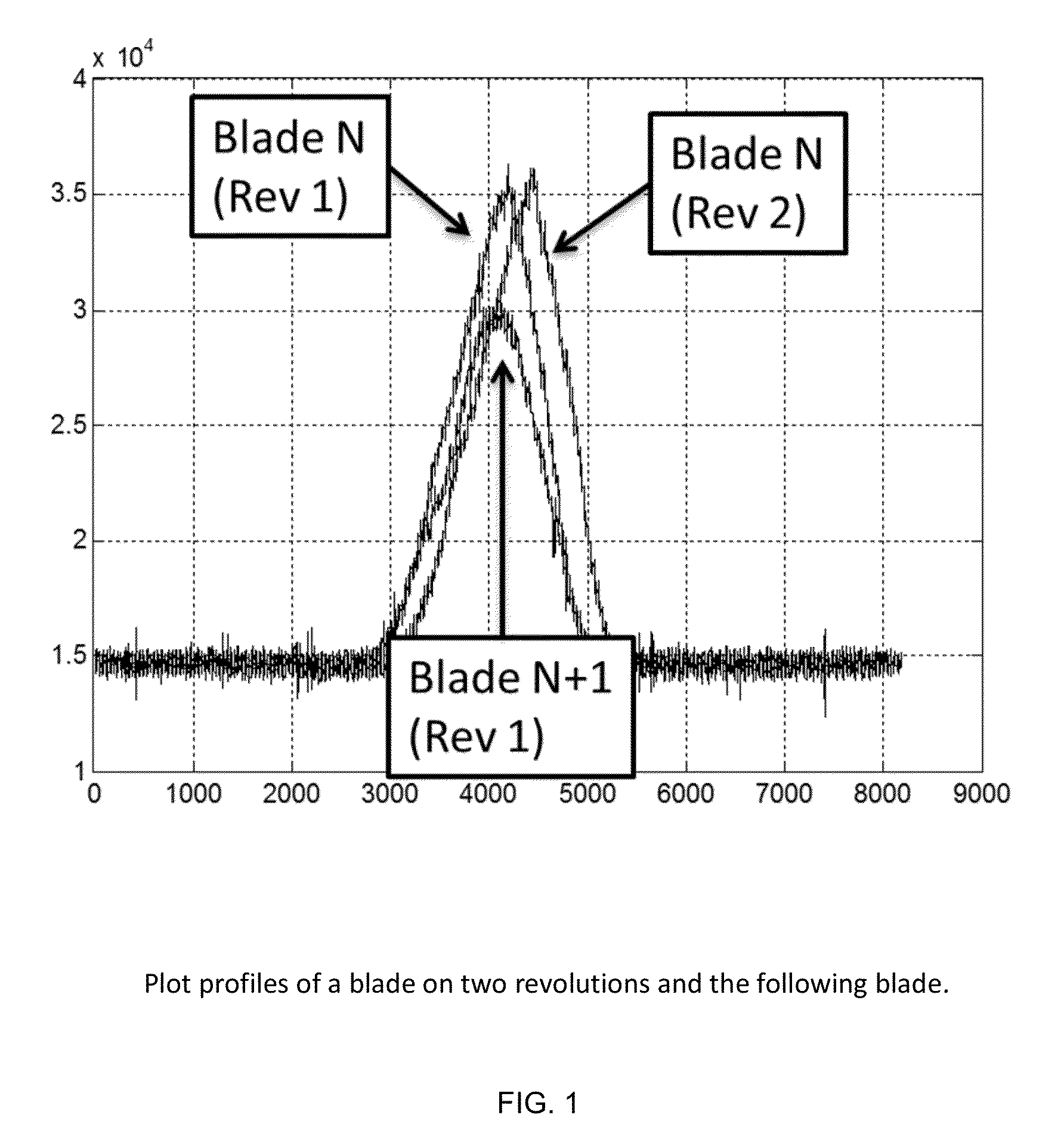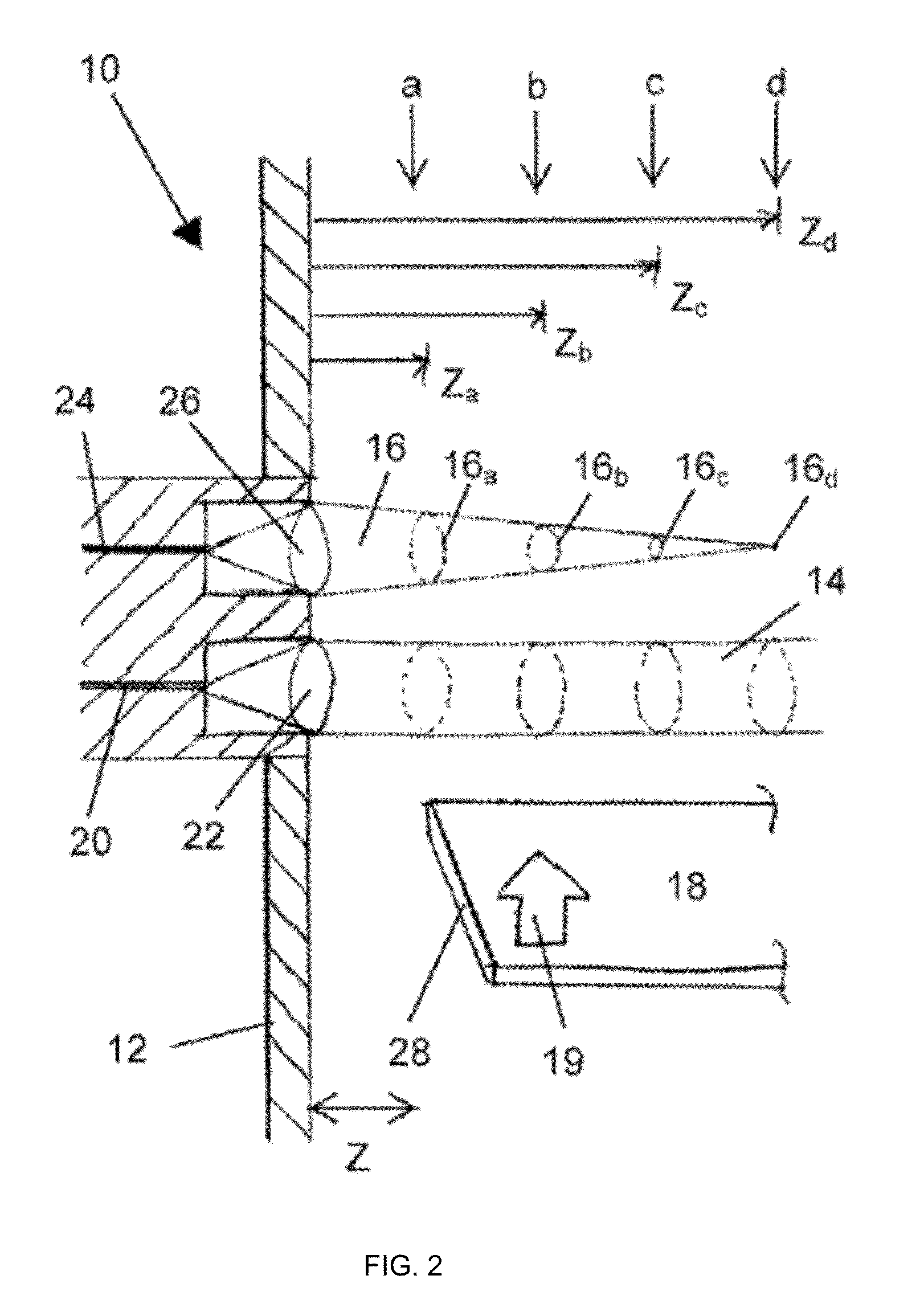Method for detecting foreign object damage in turbomachinery
a technology for turbomachinery and foreign objects, applied in the direction of process and machine control, testing/monitoring control system, instruments, etc., can solve the problems of compromising engine operation and safety, loss of life or total loss of assets, lack of reliable instrumentation to provide, etc., and achieve cost reduction
- Summary
- Abstract
- Description
- Claims
- Application Information
AI Technical Summary
Benefits of technology
Problems solved by technology
Method used
Image
Examples
example i
Turbine Blade Fingerprint Analysis
[0060]Blade damage can be categorized using a spectrum that ranges from cosmetic changes in the blade surface, increasing to minor levels of damage, then moderate damage, and ultimately rising to the level of severe blade damage potentially leading to or resulting in catastrophic engine failure. In some situations, damage even to a single blade if sufficiently severe, can cause cascading failure through the entire engine, leading to immediate engine inoperability.
[0061]Objects of the invention provide systems and methods capable of identifying many varied levels of turbine blade damage. The systems and methods of the present invention, however, are best suited for identifying intermediate levels of blade damage, including micro, minor, or moderate levels of blade damage. In the context of this invention, there is little value in identifying cosmetic changes, which are rarely important with respect to blade function, and little value in identifying c...
example ii
Blade Identification
[0091]There are several related methods for performing blade identification. In embodiments, the data utilized is a time varying optical reflection obtained by observing the blade passing a fixed point, such as a fixed point on the engine case. This is illustrated in FIG. 5. The sensor and system described above is an ideal example of the type of sensor that can be used to generate this waveform.
[0092]In most cases the process is simplified by resampling the data into a non-time based sequence. This allows blade data sets to be compared even in cases where the rotor speed is changing between data sets. This can be thought of as being the rotor's global phase angle (0-360 degrees of angular offset relative to an arbitrary starting position), or done locally as a fraction of the local blade width.
[0093]Resampling approaches can include a method of determining the number of blades on the rotor and counting the amount of time required for that many blades to pass, tr...
example iii
Blade Damage Detection Based on Time of Arrival Analysis
[0100]Another method of the invention that can be used individually or in combination with the blade fingerprint and / or blade identification analyses described above is a method for detecting blade damage based on blade time of arrival analysis.
[0101]Accordingly, systems and methods of the invention are capable of collecting and deciphering large amounts of timing-related data relating to the blades, e.g., blades on a turbine rotor. In the context of this specification, blades disposed on a rotor has the same meaning as a rotor comprising blades whether the blades are attached to the rotor as a separate entity or whether the blades and the rotor comprise a single integral unit. In embodiments, this is accomplished by analyzing one or more aspects of the pulses reflected from the blades, such as pulse width, rise time, rising edge shoulder, rising edge duration, fall time, start of falling edge, number of local maxima and minima...
PUM
 Login to View More
Login to View More Abstract
Description
Claims
Application Information
 Login to View More
Login to View More - R&D
- Intellectual Property
- Life Sciences
- Materials
- Tech Scout
- Unparalleled Data Quality
- Higher Quality Content
- 60% Fewer Hallucinations
Browse by: Latest US Patents, China's latest patents, Technical Efficacy Thesaurus, Application Domain, Technology Topic, Popular Technical Reports.
© 2025 PatSnap. All rights reserved.Legal|Privacy policy|Modern Slavery Act Transparency Statement|Sitemap|About US| Contact US: help@patsnap.com



